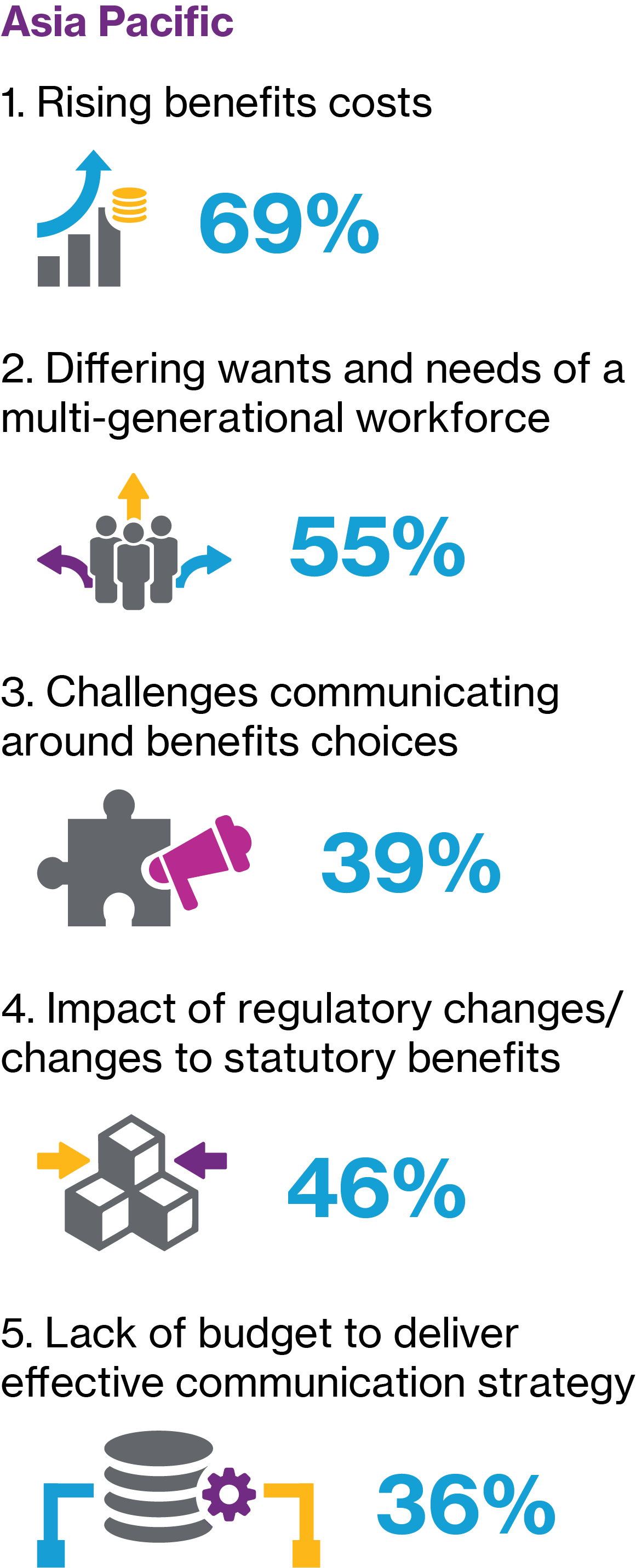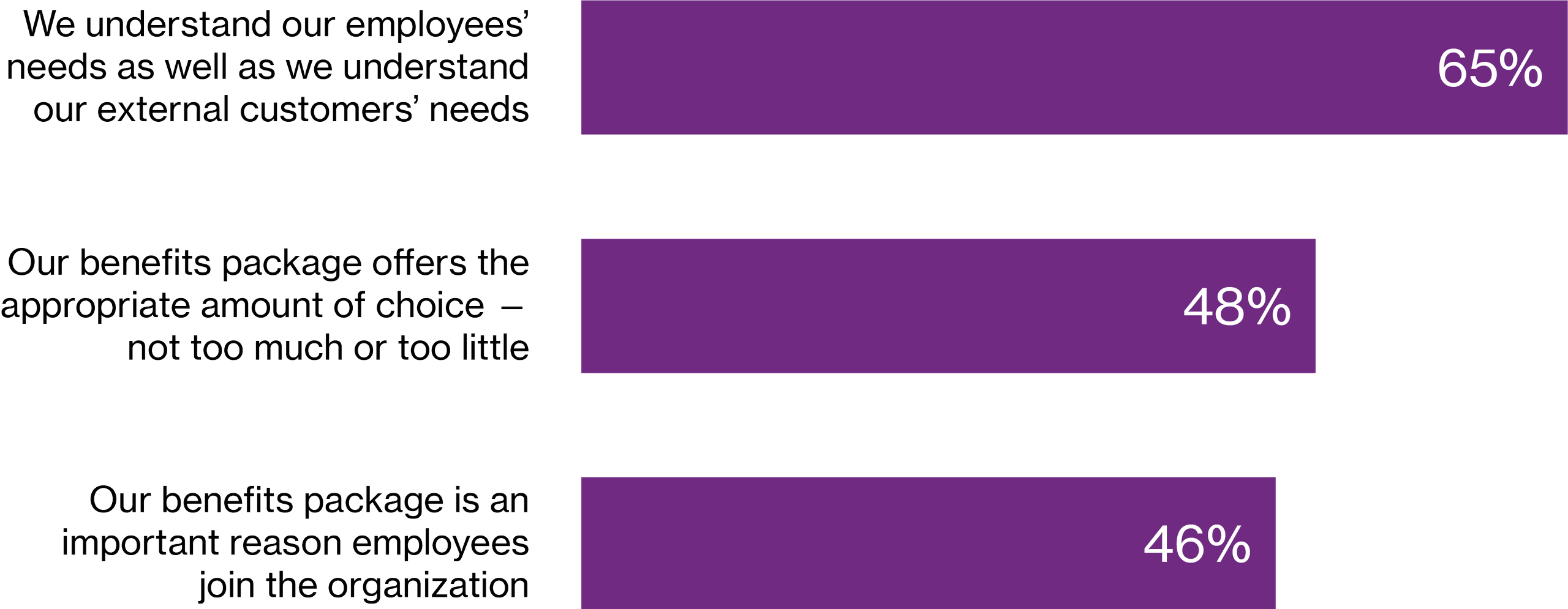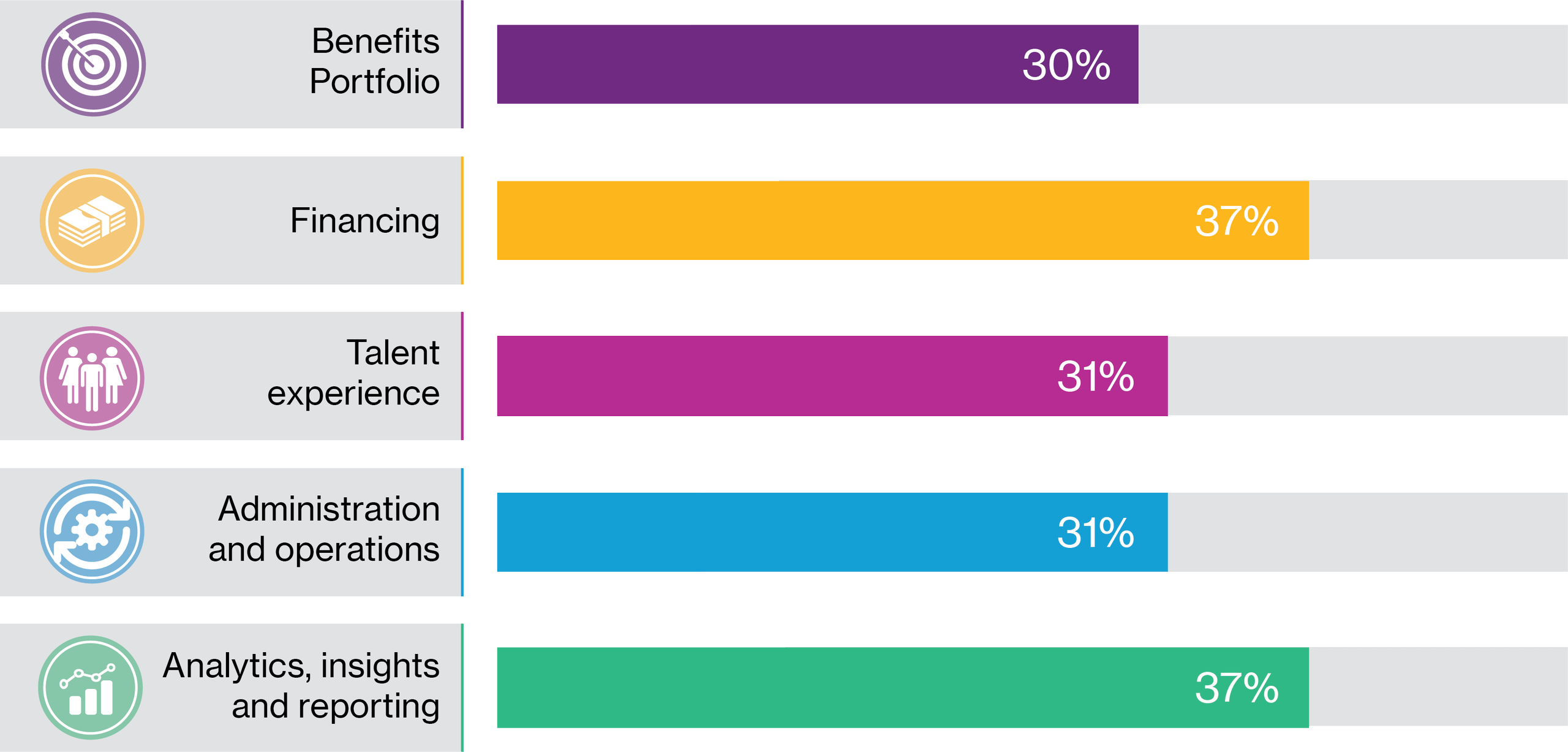Asia Pacific insights from the Willis Towers Watson 2019/2020 Benefit Trends survey
Over the past few years, employers in Asia Pacific have started on a journey to redefine and modernise their benefits. Previous Benefit Trends surveys in the region have seen a steady progression in how employers and employees view their benefits plans. From a transactional, “check the box” item, benefits have evolved into a true attraction and retention tool. Today, employers understand that their benefit strategy can be instrumental in shaping the type of organisation they are, and the way their employees — and their peers — perceive them.
From a transactional, “check the box” item, benefits have evolved into a true attraction and retention tool.
Our last survey showed a trend towards enhancing benefits to include non-core concepts such as wellbeing. Today, we see this trend go even further as employers embrace concepts such as inclusion and diversity, corporate social responsibility, and flexible work policies.
This year’s survey aims to pause and reflect: as benefits become broader, are they truly effective in what they have been designed to do? Are employers getting the full value from their benefits package, and are they truly equipped to address the needs of a changing, multigenerational workforce?
We found that only a minority of employers in Asia — and globally — think their benefits are truly effective. While this can be explained by the increasingly ambitious nature of benefits programs today, it raises the question: what can employers do to ensure that benefits are truly addressing the changing needs of the future?
Employers struggle with old challenges, as well as new:

Most employers think they understand their employees’ wants and needs. But our data shows that few outside North America think they are effectively delivering flexibility and choice to their employees (Figure 2). In Asia Pacific, less than half of employers believe their benefits package is tailored to meet the specific needs of their workforce.

Less than two fifths said that flexibility and choice were a core part of the employment deal, compared to almost 60% in North America.
Currently, only a minority of Asia Pacific employers think their benefits are truly effective (Figure 3). For most, this means their benefits plans are adequate, but not maximising value and not delivering a truly modern benefits package.

In Asia, those that do think they are highly effective are more likely to report:
In part, the reason for such relatively low scores on benefits effectiveness is that we are seeing a change in what benefits are being asked to do. Traditionally, benefits looked to address core health and retirement needs. Two years ago, in our first global Benefit Trends survey, we saw movement across the globe to a greater focus on addressing employee wellbeing.
Today, we see this trend continuing, but also expanding to include a broader notion of what employee benefits are — to now include workplace culture, inclusion and diversity (I&D), corporate social responsibility (CSR) and flexible work policies.
Employee benefits are being challenged to do more: to better target a broader concept of employee wants and needs. This may help to explain underperformance of benefits programs relative to organisational goals: benefits programs that were fit for purpose in the past are not addressing the changing needs employers see for the future.
According to the survey findings, the top four priorities for organisations’ benefit portfolios are:
Download the full report to find out more about specific actions employers across Asia Pacific are taking in areas such as financing, improving the talent experience, and their administration and operations.
| Title | File Type | File Size |
|---|---|---|
| 2019 Benefit Trends survey - Asia Pacific | 8.8 MB |